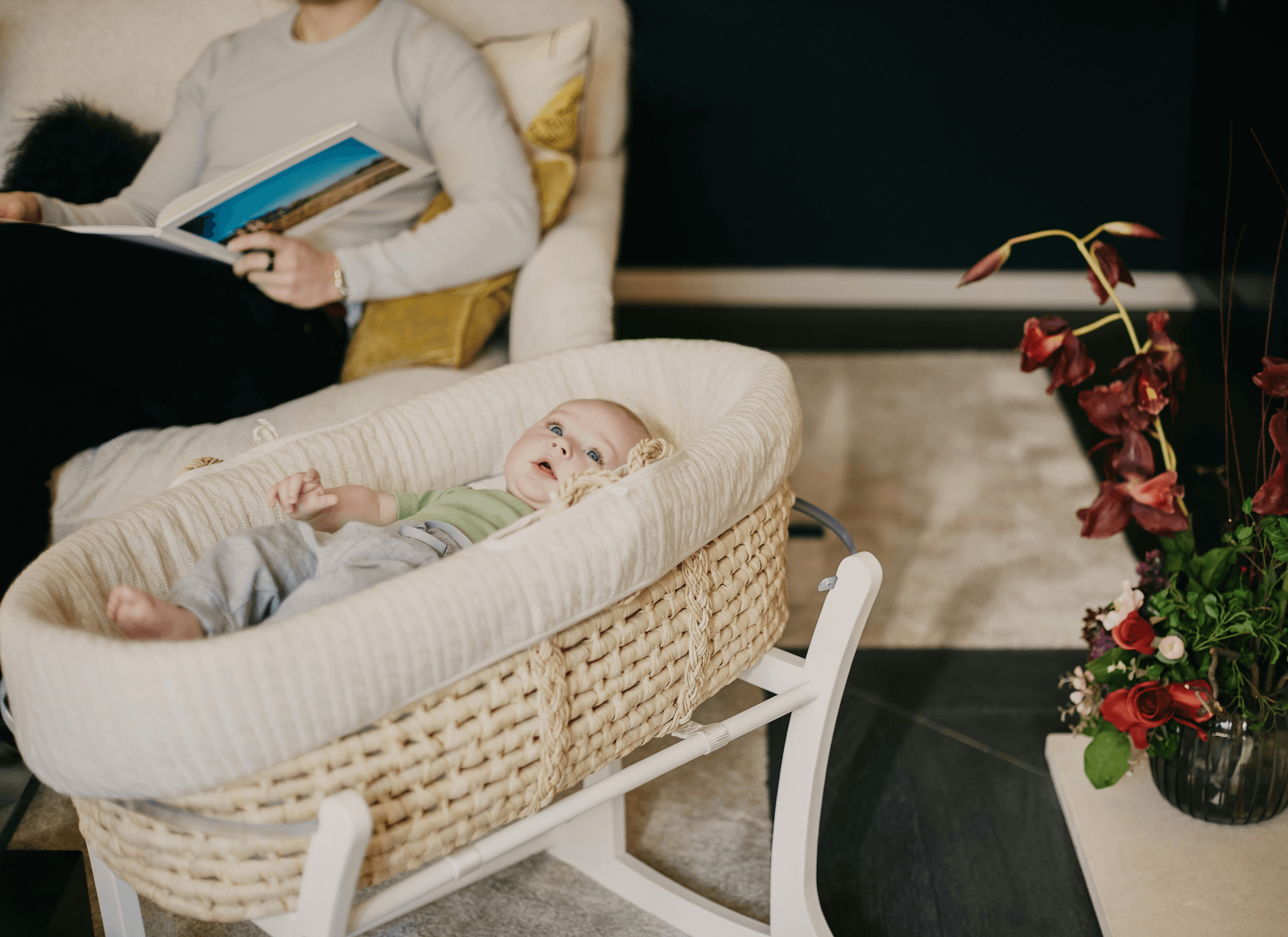Introduction

These essential pieces of baby furniture serve as a cozy haven for newborns, but they also come with significant responsibilities for manufacturers and parents alike. The intersection of design, functionality, and safety makes quality control in this sector not just important—it's absolutely critical.
Understanding Bassinets and Cradles
Bassinets and cradles are designed specifically for infants, offering a secure sleeping environment during those crucial early months. Unlike traditional cribs, these items often feature a smaller footprint, making them ideal for close proximity to parents in bedrooms or living spaces. Their designs have evolved over time from simple wooden structures to modern innovations that prioritize both aesthetics and safety.
The Importance of Quality Control
Quality control in the production of bassinets and cradles is essential to ensure that every product meets stringent safety standards. With so many different materials and designs available on the market, maintaining consistent quality can be challenging yet vital for consumer trust. Parents deserve peace of mind knowing that their chosen bassinet or cradle adheres to high-quality standards that protect their little ones.
Compliance Standards You Need to Know
Navigating compliance standards can feel like walking through a maze without a map; however, understanding the basics can make all the difference in ensuring your bassinet or cradle is safe for use. Regulatory bodies set forth specific guidelines that must be adhered to by manufacturers, ranging from material safety to structural integrity. Familiarizing yourself with these compliance standards will help you discern what constitutes quality control in bassinets and cradles.
What are Bassinets and Cradles?

Both serve as safe sleeping spaces designed specifically for newborns, offering comfort and security during those early months. Understanding what these products entail is essential for ensuring compliance with the necessary quality standards.
Definition and Features
Bassinets are small, portable beds designed for infants up to six months old, while cradles provide a similar function but often feature a rocking motion to soothe babies to sleep. Key features of bassinets include lightweight construction, enclosed sides for safety, and sometimes even adjustable height settings to facilitate easy access. Cradles may also include features like locking mechanisms or breathable mesh sides, both of which contribute significantly to the overall Bassinets and Cradles Quality Control.
Historical Context
Historically, bassinets and cradles have existed in various forms across cultures; they were often handmade by family members or local artisans using available materials. In ancient times, these sleeping arrangements were typically crafted from wood or woven fabric, emphasizing natural materials over modern synthetics. As society evolved, so did the design of these products; today’s bassinets and cradles reflect advancements in safety standards that align with contemporary Quality Standard for Bassinets and Cradles.
Modern Trends in Design
Modern design trends in bassinets and cradles focus on not only aesthetics but also functionality and safety compliance. Manufacturers are increasingly incorporating eco-friendly materials that meet stringent safety guidelines while appealing to environmentally conscious consumers. Additionally, innovative designs now offer multi-functionality—think convertible models that can transform from a bassinet into a playpen—ensuring that parents get maximum value without compromising on What are the Quality Requirements for Bassinets and Cradles?
Quality Standard for Bassinets and Cradles

When it comes to ensuring the safety and reliability of bassinets and cradles, quality standards play a pivotal role. These standards are set by various regulatory bodies that closely monitor the manufacturing processes and materials used in these essential baby products. Understanding the quality standard for bassinets and cradles not only helps manufacturers meet compliance but also assures parents that their little ones are safe while they sleep.
Overview of Regulatory Bodies
Several key regulatory bodies oversee the safety standards for bassinets and cradles, including the Consumer Product Safety Commission (CPSC) in the United States, Health Canada, and the European Committee for Standardization (CEN). These organizations establish guidelines that manufacturers must follow to ensure their products meet stringent safety requirements. By keeping an eye on these regulatory bodies, manufacturers can stay informed about any updates or changes in the quality control landscape surrounding bassinets and cradles.
Key Standards and Guidelines
The primary standard governing bassinets is ASTM F2194 in the U.S., which outlines performance requirements for cradle-like sleeping products. In Europe, EN 1130 sets forth similar guidelines regarding safety measures for children's cribs, including stability testing and material toxicity assessments. Adhering to these key standards is crucial for manufacturers aiming to achieve bassinet and cradle quality control that meets both consumer expectations and regulatory demands.
Importance of Certification
Certification is more than just a shiny badge; it's a mark of trustworthiness in bassinet production. When products are certified by recognized organizations, it signals to consumers that they have undergone rigorous testing to meet established safety standards. This not only enhances brand reputation but also significantly reduces liability risks associated with potential product failures—essentially making certification a win-win situation for both manufacturers and parents concerned about their baby's safety.
What are the Quality Requirements for Bassinets and Cradles?
Ensuring the safety and reliability of bassinets and cradles is paramount, especially when it comes to our little ones. The quality requirements for these essential baby products encompass various aspects, including material safety, design considerations, and rigorous testing protocols. Understanding these requirements is crucial for manufacturers aiming to meet the standards that guarantee both compliance and customer trust.
Material Safety and Durability
When discussing what are bassinets and cradles?, one cannot overlook the importance of material safety and durability. The materials used in their construction must be non-toxic, free from harmful chemicals like phthalates or lead, ensuring that they pose no risk to infants who spend significant time in them. Additionally, durability is key; a well-constructed bassinet or cradle should withstand daily use while maintaining its structural integrity over time.
Manufacturers must prioritize sourcing high-quality materials that not only meet regulatory standards but also enhance the longevity of their products. This focus on material safety directly ties into quality control measures that identify potential hazards before they reach consumers. Ultimately, investing in safe materials lays the groundwork for meeting quality standards for bassinets and cradles.
Design Considerations for Infant Safety
Design plays a pivotal role when evaluating what are the quality requirements for bassinets and cradles? Safety features such as stable bases, secure mattress fits, and breathable fabrics are vital elements that can prevent accidents or injuries. Additionally, designs should minimize any sharp edges or small parts that could pose choking hazards to curious little hands.
Moreover, innovative design trends have emerged to enhance infant comfort while ensuring maximum safety compliance with industry standards. For example, adjustable height settings allow parents to easily access their babies without straining their backs—a thoughtful consideration in modern bassinet design. These design considerations not only contribute to overall product appeal but also align with rigorous quality control protocols aimed at safeguarding infant well-being.
Testing and Inspection Protocols
To ensure that bassinet production meets stringent quality standards for bassinets and cradles?, comprehensive testing and inspection protocols are essential components of manufacturing processes. These protocols often include stress tests on structural components as well as assessments of chemical emissions from materials used in production. By implementing thorough inspection procedures at various stages of manufacturing—pre-production through post-production—companies can identify defects early on.
Additionally, third-party testing facilities provide an unbiased evaluation of product safety against established regulations before they hit the market. This independent verification enhances consumer confidence while reinforcing a brand's commitment to maintaining high-quality standards throughout its product line-up. In essence, rigorous testing not only protects infants but also solidifies a manufacturer’s reputation within an increasingly competitive market focused on bassinet and cradle quality control.
The Role of Quality Control in Manufacturing
In the manufacturing landscape, particularly in the production of bassinets and cradles, quality control plays a pivotal role. It ensures that every product not only meets aesthetic standards but also adheres to safety regulations essential for infant care. Without robust Bassinets and Cradles Quality Control processes, manufacturers risk putting unsafe products into the market, which can lead to serious consequences.
Process of Quality Control
The process of quality control for bassinets and cradles involves several key stages that ensure compliance with established standards. Initially, raw materials undergo rigorous testing to assess their safety and durability; this step is crucial since the materials used directly impact what are the quality requirements for bassinets and cradles. Following material selection, manufacturers implement systematic inspections throughout production, ensuring that each component meets predefined specifications before assembly.
Once assembled, finished products are subjected to final inspections where they are tested for stability and safety features—think weight limits and secure fastenings. This comprehensive approach ensures that any potential issues are identified early on, reducing the likelihood of recalls or customer complaints down the line. Ultimately, a diligent quality control process not only protects consumers but also enhances brand reputation in a competitive market.
Common Issues in Bassinet and Cradle Production
Despite rigorous processes in place, common issues can arise during bassinet and cradle production that threaten overall quality control. One frequent problem is inadequate testing of materials; if manufacturers overlook what are bassinet and cradle quality requirements regarding material safety—such as harmful chemicals or weak structures—this could lead to hazardous products being sold to unsuspecting parents.
Another issue is inconsistent manufacturing practices across different production batches; this inconsistency can result from variations in labor skills or equipment malfunctions. Lastly, poor communication between design teams and production staff often leads to misunderstandings about essential design features meant for infant safety—a critical aspect when considering what are the quality requirements for bassinets and cradles? Addressing these issues proactively through continuous training and improved communication channels is vital for maintaining high-quality standards.
Case Studies from Leading Brands
To illustrate effective Bassinets and Cradles Quality Control practices, let’s look at some leading brands known for their commitment to excellence in manufacturing. For instance, Brand X implemented an innovative feedback loop between customer service teams and product development; this allowed them to swiftly address concerns raised by parents about specific models while ensuring adherence to what are bassinet and cradle quality standards during future productions.
Similarly, Brand Y has adopted advanced technologies such as automated inspection systems that utilize AI-driven analytics—this significantly reduces human error during inspections while enhancing compliance with established guidelines on what are the quality requirements for bassinets and cradles? These case studies demonstrate how proactive measures not only prevent defects but also foster consumer trust through transparency about product safety.
How China Inspection Pro Ensures Compliance

When it comes to ensuring the quality of bassinets and cradles, China Inspection Pro stands at the forefront of quality control services. They specialize in a comprehensive range of inspection services tailored specifically for these essential baby products. By focusing on both compliance and safety, they help manufacturers meet stringent standards while also enhancing consumer trust in their products.
Overview of Quality Inspection Services
China Inspection Pro offers an array of quality inspection services designed to uphold the highest standards for bassinets and cradles. Their inspections cover everything from material safety to design integrity, ensuring that every product adheres to established guidelines. With a keen eye on what are bassinets and cradles? they evaluate each item not just for compliance but also for practical usability in real-world settings.
The team employs advanced testing methods to assess various aspects like durability, stability, and overall safety features. This thorough approach helps manufacturers identify potential issues before they reach the market, ultimately contributing to better product outcomes. By adhering to quality standards for bassinets and cradles, China Inspection Pro ensures that each item is fit for its purpose—keeping infants safe while providing peace of mind to parents.
Benefits of Using Professional Inspectors
For starters, these experts bring years of experience specifically related to what are the quality requirements for bassinets and cradles? Their specialized knowledge allows them to spot potential problems early in the manufacturing process, saving time and resources down the line.
Moreover, relying on professionals ensures that all inspections are conducted according to international standards, which is crucial in today’s global market. This level of oversight not only enhances product quality but also boosts brand reputation among consumers who prioritize safety above all else. Ultimately, engaging with seasoned inspectors translates into fewer recalls or safety incidents related to bassinet and cradle products.
Success Stories in Product Quality Improvement
One notable case involved a leading brand that faced challenges with material durability; after partnering with inspectors from China Inspection Pro, they implemented necessary adjustments that significantly improved product lifespan without compromising safety features.
Another manufacturer benefited from a detailed risk assessment provided by professional inspectors who identified design flaws that could potentially lead to accidents. By addressing these concerns proactively, the brand not only enhanced their product offerings but also gained valuable insights into what are bassinets and cradles? This kind of collaboration exemplifies how rigorous adherence to quality standards can lead directly to improved consumer satisfaction and loyalty.
In summary, by leveraging expert inspections from China Inspection Pro focused on bassinet and cradle compliance needs, manufacturers can ensure their products meet high-quality benchmarks while navigating complex regulations confidently.
Conclusion
In wrapping up our exploration of bassinets and cradles, it’s essential to reflect on the core aspects of Bassinets and Cradles Quality Control. These products are not just simple pieces of furniture; they play a crucial role in ensuring the safety and comfort of infants. Understanding what are bassinets and cradles, along with their respective quality standards, empowers parents and manufacturers alike to make informed decisions that prioritize child safety.
Key Takeaways on Bassinet and Cradle Quality
When considering quality control in bassinets and cradles, several key takeaways emerge. First, it's vital to recognize that quality standards for bassinets and cradles encompass a range of factors including material safety, durability, and design integrity. Secondly, compliance with established guidelines ensures that these products meet rigorous safety requirements, which is paramount for protecting our little ones.
Moreover, knowing what are the quality requirements for bassinets and cradles can help consumers choose wisely. From understanding the importance of certification to recognizing the role of regulatory bodies in setting these benchmarks, awareness is your best ally in navigating this landscape. Ultimately, prioritizing quality control means investing in peace of mind for both parents and children.
Navigating Compliance with Confidence
Navigating compliance with confidence involves staying informed about current regulations surrounding bassinet and cradle production. Manufacturers should familiarize themselves with both national standards as well as international guidelines to ensure their products meet all necessary criteria for safety and performance. This proactive approach not only enhances product reliability but also builds trust among consumers who seek assurance when purchasing these essential items.
Additionally, engaging professional inspection services can streamline this process significantly; they provide expertise that helps manufacturers adhere to stringent quality control measures effectively. By doing so, businesses can mitigate risks associated with non-compliance while simultaneously enhancing their brand reputation in a competitive market focused on infant safety. Therefore, understanding what are bassinet and cradle quality requirements ultimately leads to better compliance strategies.
The Future of Bassinets and Cradles Quality Standards
Looking ahead at the future of bassinets and cradles quality standards reveals exciting possibilities driven by technology advancements and evolving consumer expectations. As new materials emerge alongside innovative designs tailored specifically for infant needs, we can expect an ongoing commitment to enhancing both safety features and aesthetic appeal in these products. Furthermore, increasing awareness around sustainability will likely push manufacturers toward eco-friendly materials without compromising on quality or safety.
The continuous evolution within this sector emphasizes the importance of maintaining rigorous Bassinets and Cradles Quality Control practices throughout production processes—ensuring each item meets or exceeds established standards before reaching consumers’ hands. As we embrace these changes together—manufacturers committed to excellence while parents demand nothing less—we pave the way for a safer future where every baby sleeps soundly in their carefully crafted haven.
